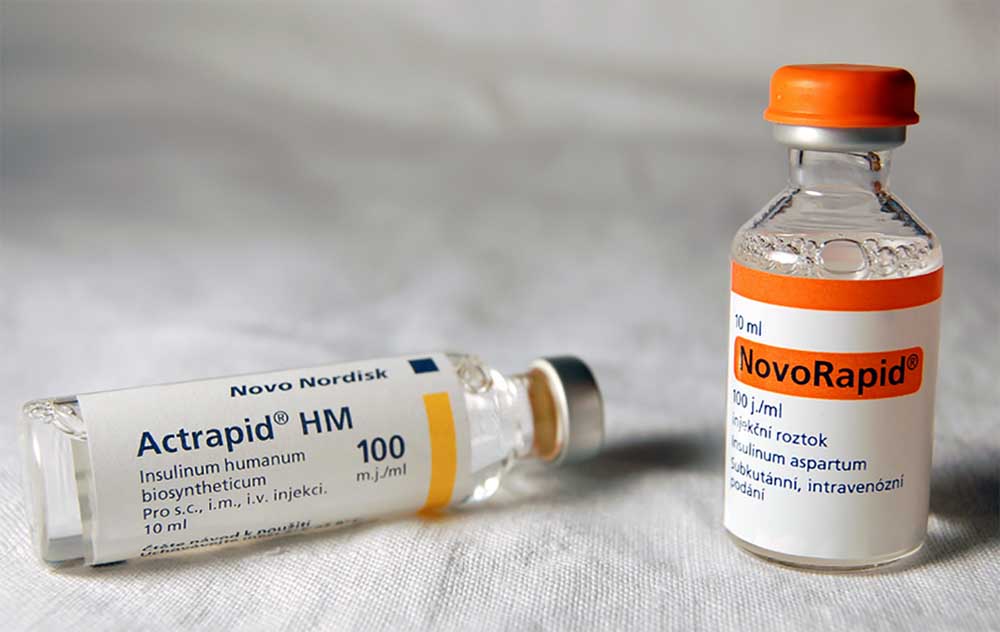Guest column: High insulin prices betray researchers’ vision
Published 9:57 am Thursday, August 25, 2022

- Insulin remains too expensive for many Americans. Pictured are two vials of insulin. They have been given trade names, Actrapid, left, and NovoRapid by the manufacturers.
The discovery of insulin 101 years ago marked one of the greatest achievements in medical science history. This “miracle drug,” as it was called, saved from certain death thousands of children with type 1 diabetes. One of the University of Toronto researchers who made the discovery, Frederick Banting, sold his share of the patent for $1 because, he said, “Insulin does not belong to me. It belongs to the world.”
Trending
That history is important, considering the continued financial hardship for many Americans with diabetes — a betrayal of the spirit in which insulin was discovered. The recent landmark Inflation Reduction Act, which will cap insulin at $35 per month for Medicare recipients, is a positive step but it will not ease the economic stress among the much larger number of patients on private insurance.
About 10 million Americans use insulin, either for type 1 diabetes or the more common type 2 diabetes. T1D International, a nonprofit organization, published a study in 2019 indicating that more than 25% of Americans who use insulin must ration it at least once a year due to cost. The mortal danger of insulin rationing has been widely reported: The practice not only causes high blood glucose levels, which raise the risk of long-term complications, but also can cause an acute metabolic emergency, leading to death.
T1D International, a nonprofit organization, published a study in 2019 indicating that more than 25% of Americans who use insulin must ration it at least once a year due to cost.
Trending
Why is insulin affordability a problem in America?
The answer is complicated, but let’s start with the basics. Most Americans don’t really choose their health care. Instead, their health care is chosen for them by a public or private insurer. In short, payers prevail. So actual health care is based less on the needs of patients than on their age, residence, employment, income and past military experience.
These variables dictate out-of-pocket costs for care, including for insulin.
Meanwhile, as insulin formulations have improved, the retail cost (the amount that patients who do not have insurance must pay) has risen dramatically: 200% between 2007 and 2018. Patients with little to no insurance complain of paying more than $1,000 per month. Even patients with insurance can pay thousands of dollars per year for insulin.
Some patients have looked to alternatives across the border. In Canada, the same insulin is available at 10%-20% of the retail cost in Seattle, so patients drive there for their insulin.
While the companies that make insulin are often cast as the villains for “price gouging,” much of the blame lies with pharmacy benefit managers, the intermediaries between the manufacturer and the consumer. But these intermediaries are themselves a function of the convoluted process by which insulin reaches consumers. While most nations enjoy a streamlined, single-payer system, our fractured, hydra-headed system invites dysfunction, inefficiency and, ultimately, higher prices for all patients.
Our political leaders also share the blame. The Affordable Care Act gave states the opportunity to expand Medicaid, which provides health care coverage for low-income residents. But 12 states, including many in the Deep South, chose not to expand Medicaid, exacerbating the high cost of insulin for the most vulnerable.
In the Inflation Reduction Act, which covers a wide range of policy issues, the insulin cap for Medicare recipients is a belated acknowledgment that high insulin prices are a stain on our country. It also reflects a remedy that some states have already introduced. In 2021, a Washington state law capped insulin at $100 per month for state-regulated commercial health insurance plans and state employee plans, and earlier this year, Gov. Jay Inslee signed a bill reducing that amount to $35. But this cap does not apply to Washingtonians with non-Washington state commercial coverage.
Regrettably, the new federal law limits financial relief to a minority of patients who depend on insulin. A proposal earlier this month to expand the price cap to commercial insurance providers received 57 votes in U.S. Senate, but 60 votes were needed for passage. All votes in opposition were cast by Republicans.
Curiously, after the vote, Sen. Charles E. Grassley, R-Iowa, told a group of constituents that he supports the insulin cap but that he voted against it because it didn’t go far enough to fix the problem — a bit of sophistry that is cold comfort to the many patients who continue to be burdened by high insulin prices.
The insulin companies themselves, in response to consumer outrage, are now offering programs to lower prices, but the programs are not well-publicized and are underused.
The time has come for our political and business leaders to recognize that insulin is a lifesaving drug for a chronic condition, and to guarantee that no patient who needs insulin should have to go without it. Let us finally fulfill Dr. Banting’s dream that insulin belongs to the world.









